The Kibera Slum Tour presents a compelling opportunity for those looking to gain an authentic perspective on life in one of Africa’s largest informal settlements. Participants explore vibrant markets, engage with local community members, and witness grassroots initiatives aimed at improving lives. With a high traveler recommendation rate, this immersive experience emphasizes respectful interaction and cultural understanding. However, the complexities of such a tour raise questions about the ethics of tourism in marginalized communities. What truly lies beneath the surface of Kibera’s resilience and daily challenges?
Good To Know
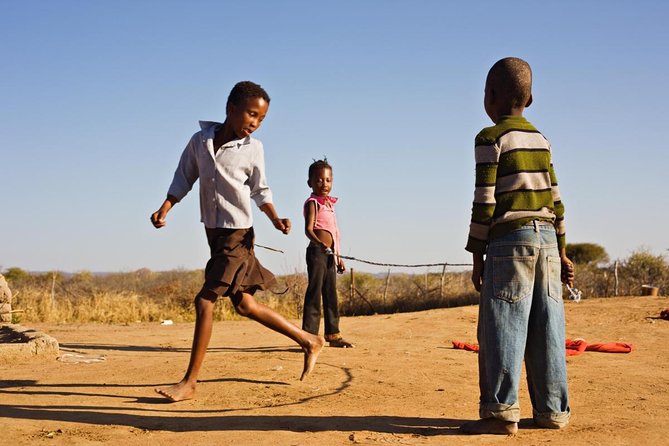
- Experience the vibrant culture and community of Kibera through a private three-hour guided tour starting at Greenhouse Mall.
- Explore Toi Market for handmade crafts and fresh produce, supporting local vendors and artisans.
- Engage with local families during home visits, gaining insights into their daily lives and resilience.
- Visit the Hope and Shine Kibera Centre to learn about educational initiatives and community support programs.
- Capture unique photography opportunities while fostering respectful interactions with Kibera’s residents.
Tour Overview

Visitors often rave about the half-day Kibera slum tour, which offers a unique glimpse into life within East Africa’s largest informal settlement, known as the "City of Hope."
This private tour, lasting three hours, allows participants to interact with local community members, explore bustling markets, and gain insights into the resilience and ingenuity of Kibera residents.
With an impressive 99% traveler recommendation rate from 74 reviews, the experience stands out for its safety and informative guides. Participants begin at Greenhouse Mall and conclude at Equity Bank in Kibera.
The tour is wheelchair and stroller accessible, but not advised for those with back problems. It encourages supporting local vendors, fostering a sense of community and connection throughout the experience.
You can also read our reviews of more tours and experiences in Nairobi.
Detailed Itinerary
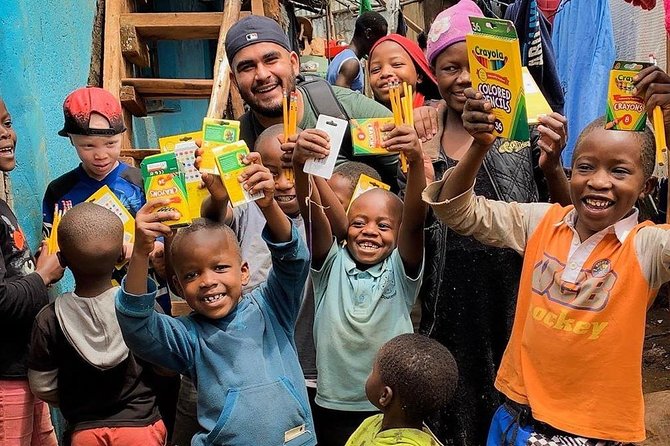
The Kibera slum tour unfolds with a well-structured itinerary designed to provide an immersive experience. Participants meet at Greenhouse Mall in Kilimani and embark on a three-hour journey through East Africa’s largest informal settlement.
Highlights of the itinerary include:
-
Introduction to Kibera: A brief overview of the community’s history and culture.
-
Toi Market Visit: A vibrant local market showcasing handmade crafts and fresh produce.
-
Home Visits: Genuine interactions with local families to understand their daily lives.
-
Hope and Shine Kibera Centre: A stop at a local NGO supporting education and community initiatives.
This engaging tour not only educates but also fosters a connection with Kibera’s resilient residents.
What to Expect

During the Kibera slum tour, participants can expect an eye-opening experience that goes beyond mere sightseeing. They’ll explore the vibrant community, exploring places like the Toi Market and the Hope and Shine Kibera Centre. Guests will have opportunities to take pictures and witness firsthand the resilience of Kibera residents.
Here’s what to anticipate:
| Activity | Description |
|---|---|
| Market Exploration | Visit Toi Market for local crafts and food. |
| Home Visits | Experience life inside a slum home. |
| Community Learning | Learn about local initiatives and resilience. |
| Photography Opportunities | Capture the essence of Kibera’s daily life. |
This engaging tour provides a unique perspective on life in one of Africa’s largest informal settlements, fostering respect and understanding.
Community Interaction
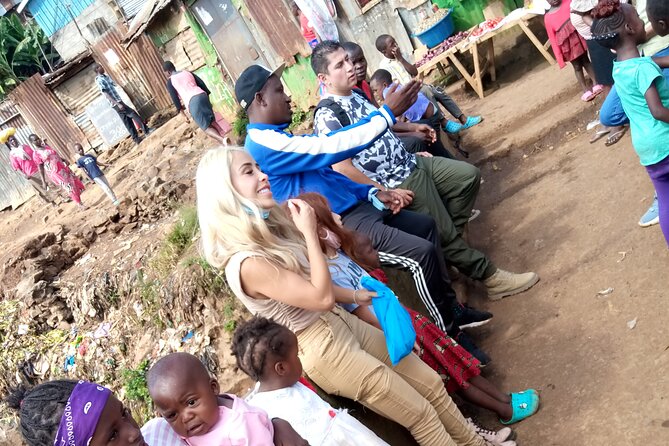
Engaging with the local community is a highlight of the Kibera slum tour, offering participants a chance to connect with residents on a personal level. This interaction enriches the experience, fostering understanding and appreciation for the vibrant culture of Kibera.
Visitors can expect to:
- Visit local homes and learn about daily life.
- Participate in community-led initiatives and projects.
- Explore the bustling Toi Market, engaging with vendors.
- Share stories and laughter with children and families.
These connections create lasting memories and insights into the resilience of Kibera’s residents.
Through genuine interactions, participants not only gain knowledge but also help support local economies and initiatives, contributing positively to the community they visit.
Reviews and Ratings
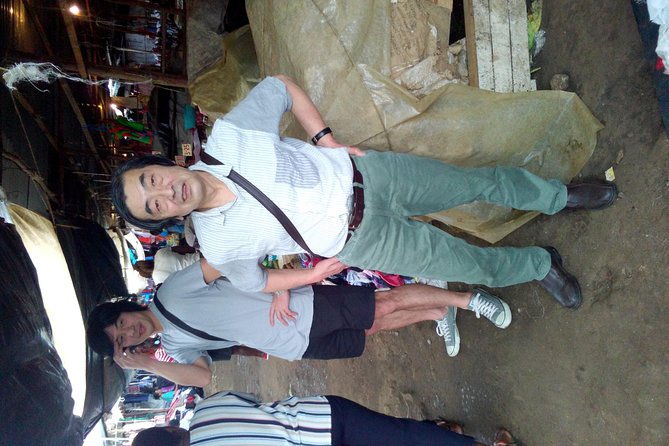
Rave reviews pour in for the Kibera slum tour, highlighting its profound impact on visitors.
With an impressive overall rating of 5.0 based on 74 reviews, it’s clear that participants are deeply moved by their experiences.
Most reviewers commend the safety measures, informative guides, and the unique insights provided during the tour.
Out of the total reviews, 68 are five-star, showcasing a strong consensus on the tour’s quality.
Visitors particularly praise the guides for their extensive knowledge and respectful engagement with the community.
Many participants leave feeling inspired by the resilience and creativity of Kibera’s residents.
- 3 Days Masai Mara Group-Joining Safaris | Budget Daily Departures
- Day Tour To Lake Nakuru Park With Optional Boat Ride on Lake Naivasha
- 3 Days Masai Mara on Private 4×4 Land Cruiser
- Nairobi National Park,Giraffe Centre, Karen Blixen Museum.
- 3 Days Maasai Mara Guided Safari From Nairobi
- Airport Meet & Assist Services JKIA(Arrival-Departure-Transit)
Pricing and Accessibility
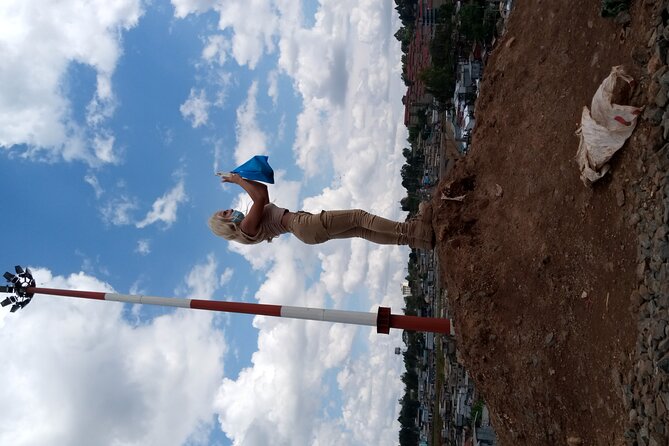
With a starting price of just $35.00, the Kibera slum tour offers an affordable opportunity for travelers to enjoy the culture and community of Nairobi’s largest informal settlement.
This tour not only provides value but also ensures accessibility for many.
Key features include:
- Duration: A 3-hour private half-day experience.
- Accessibility: Wheelchair and stroller friendly.
- Cancellation Policy: Free cancellation up to 24 hours before the tour starts.
- Local Impact: Encourages support for local vendors and initiatives.
Travelers can explore the vibrant life within Kibera while engaging with the community, making it a rewarding experience at an unbeatable price.
Recommendations for Visitors
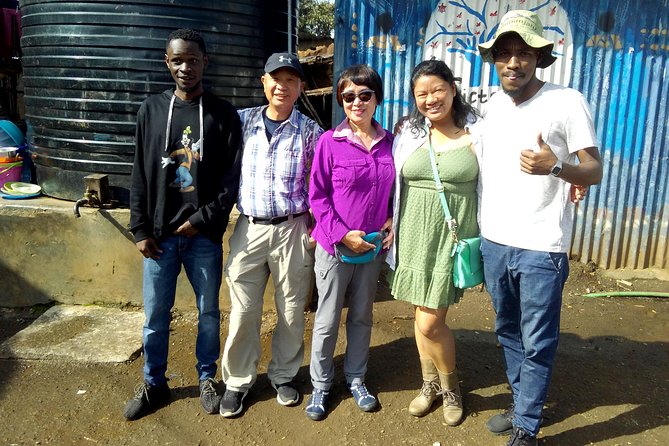
When visiting the Kibera slum, travelers should come prepared to fully embrace the experience. Comfortable footwear is a must, as the tour involves navigating uneven paths.
Visitors should approach their time in Kibera with an open mind and a respectful attitude, acknowledging the resilience of its residents. It’s also wise to bring a camera, but always ask for permission before photographing individuals.
Engaging with local vendors and purchasing handmade goods can enrich the experience while supporting the community. Travelers should stay aware of their surroundings and follow the guide’s recommendations to ensure safety.
Lastly, consider bringing small donations, such as school supplies, to share with the community, enhancing the visit while making a positive impact.
Supporting Local Initiatives
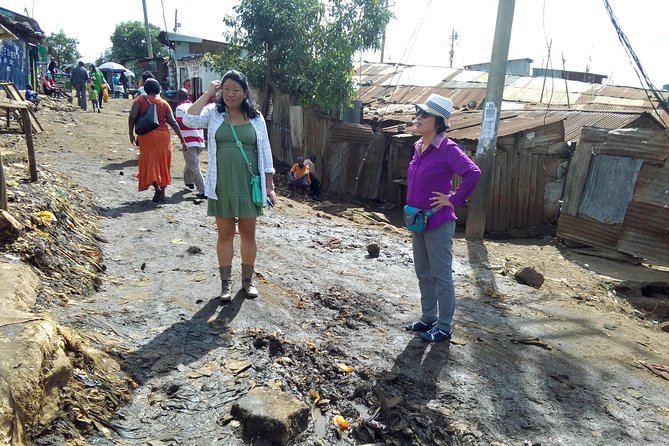
Many travelers find that supporting local initiatives during their visit to Kibera not only enhances their experience but also contributes positively to the community.
By engaging with local projects, visitors help foster economic growth and social empowerment.
Here are four impactful ways to support local initiatives:
-
Buy from local vendors: Purchase handmade crafts and fresh produce to directly support artisans and farmers.
-
Participate in workshops: Join local classes in art, cooking, or traditional crafts, which help sustain cultural practices.
-
Donate to community centers: Contribute funds or supplies to organizations focused on education and health.
-
Spread the word: Share your experiences on social media to raise awareness and encourage others to visit and support Kibera.
Engaging in these activities creates lasting connections and a meaningful impact.
Frequently Asked Questions
Is Photography Allowed During the Kibera Slum Tour?
Photography’s generally allowed, but participants should respect community members’ privacy. Tour guides encourage taking pictures, especially of the vibrant market scenes, while reminding everyone to be sensitive to the residents and their surroundings.
What Should I Wear for the Tour?
For the tour, participants should wear comfortable shoes suitable for walking, breathable clothing to accommodate the warm climate, and a hat for sun protection. They’ll appreciate the practicality and comfort throughout the experience.
Are There Any Age Restrictions for Participants?
There aren’t strict age restrictions for participants, but younger children may need closer supervision. Travelers with mobility concerns should consider accessibility options, ensuring everyone can enjoy the experience comfortably and safely.
Can I Bring Children on This Tour?
Children can join the tour, but it’s vital to consider their comfort and safety. The experience involves walking through busy areas, so parents should ensure kids are prepared for the environment and activities.
How Do I Get to the Meeting Point?
To reach the meeting point at Greenhouse Mall, Kilimani, visitors can use local taxis or rideshare services. It’s easily accessible and well-known, ensuring a straightforward journey to start their unique experience.
The Sum Up
The Kibera Slum Tour offers a profound glimpse into the resilience and vibrancy of a remarkable community. Participants leave with enriched perspectives and connections forged through genuine interactions. With its focus on education and respect, the tour not only highlights the daily lives of Kibera’s residents but also supports local initiatives, ensuring that visitors contribute positively to the area. This experience is a must for anyone seeking to understand the heart and soul of Kibera.
More Tours in Nairobi
More Tour Reviews in Nairobi
Not for you? Here's more nearby things to do in Nairobi we have reviewed
- DAY TOUR: DAVID SHELDRICK ELEPHANT TRUST & GIRAFFE CENTER
- Nairobi National Park Tour
- 5 Days Maasai Mara -Lake Naivasha-Lake Nakuru
- 3-DAY Best Maasai Mara Safari (POPULAR)
- Nairobi City Tour and Kibera Slum Tour
- Lake Nakuru National Park: Day Trip From Nairobi
- Adventurous 4 Days Maasai Mara – Lake Nakuru Safari
- 3 Days Masai Mara Private Safari in AA Lodge
- 3 Days Maasai Mara Budget Safari
- 14-Days Kenya and Tanzania Camping Safari From Nairobi
- Lake Victoria and Western Kenya 8 Days Adventure Safari
- 7-Day Samburu, Maasai Mara, L Nakuru, Lake Naivasha Hells Gate
